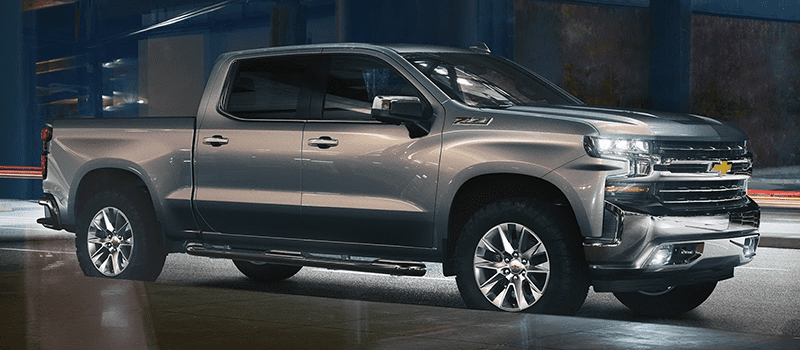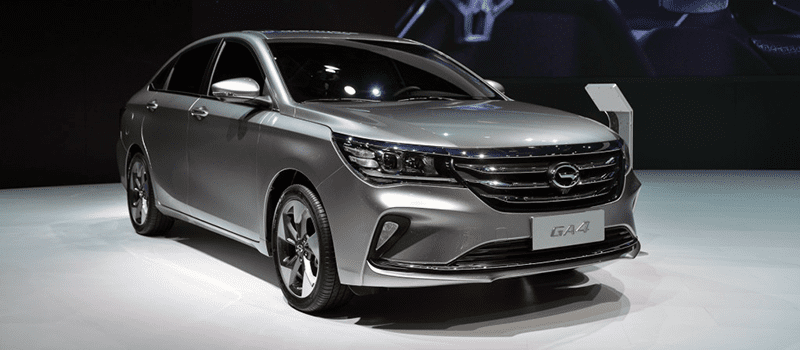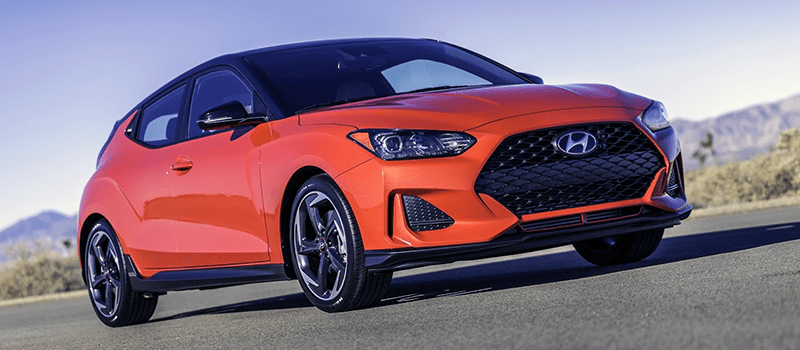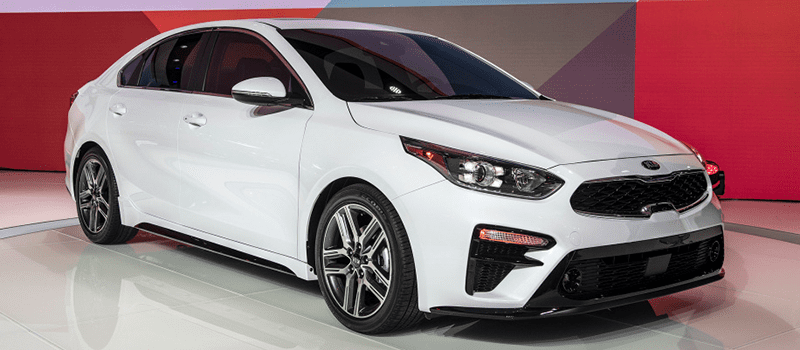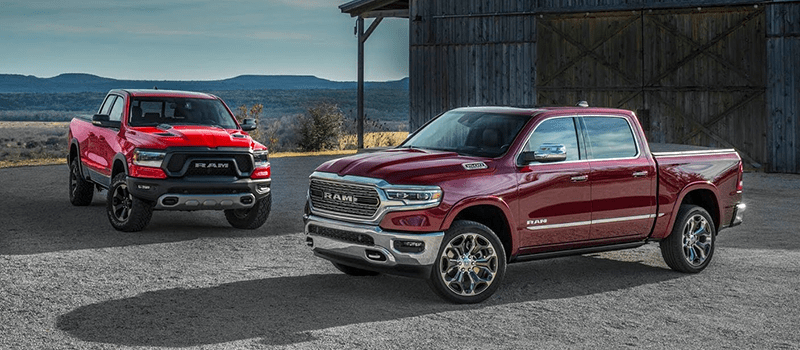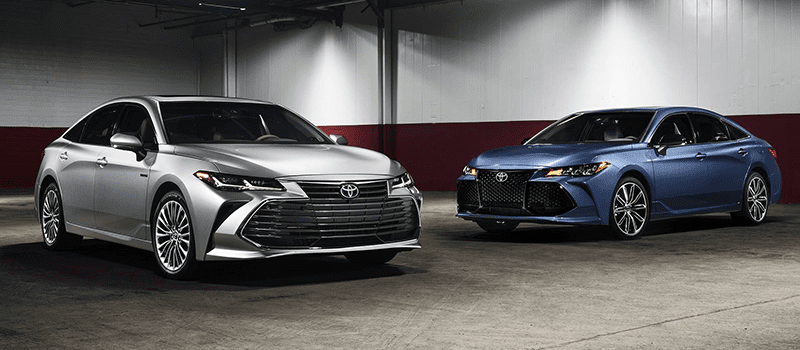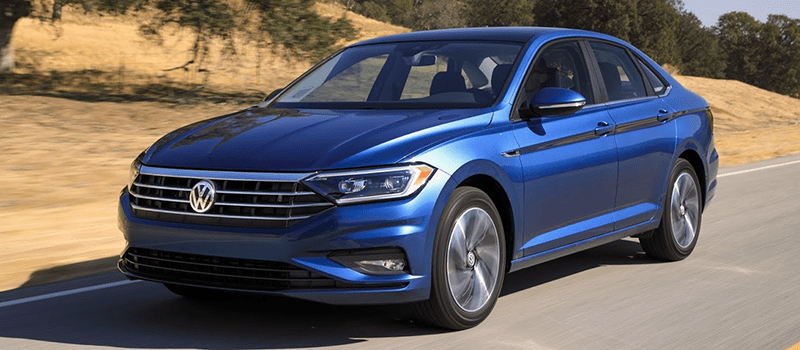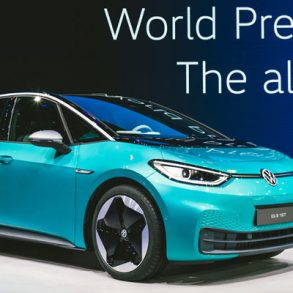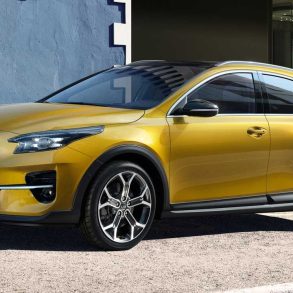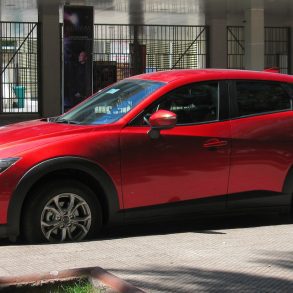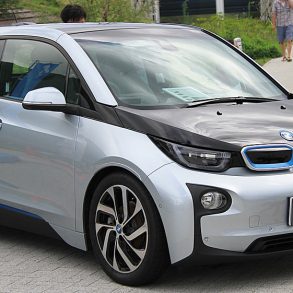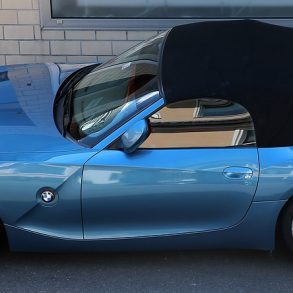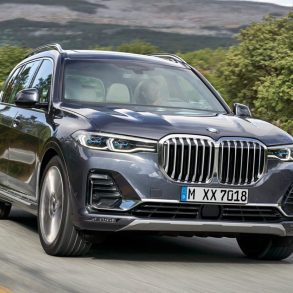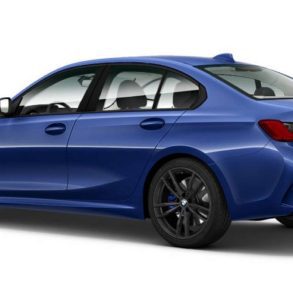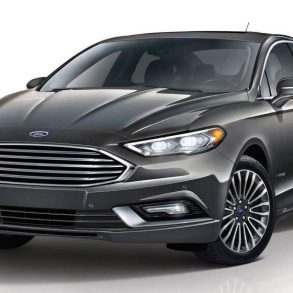Like every year in January, Detroit shows off its resilience, its working-class glamour and its vitality when the doors open of the Cobo center, showing all the latest toys on wheels. Hundreds of auto executives, thousands of journalists and tens of thousands of potential car buyers assemble to look at shiny chrome, kick tires and listen to each manufacturer explain how their latest models are the best they’ve ever made, blow away the competition and revolutionize their segment. We like to cut away the blah blah and keep its simple: do we like it or not?
Chevrolet Silverado
Kriss: hit
It’s not easy styling a pickup – the form is all but set in stone, and the detailing severely limited by the need for the base models to sell at low prices. All of which makes the new Silverado all the more impressive – love it or hate it, the new styling is bold and sharp, the latter not always a Chevrolet forte. What’s really impressive to me is that the Silverado manages to combine classic Chevy design cues, such as the lights and the chrome bar that bisects the grille, with proportions that draw on the short-nosed Toyota Tundra, and upmarket, modern detailing, such as the projector headlamps, surprisingly well-executed side creases and character lines, and finally that controversial “aero fin” in front of the front wheels. Sure, it’s still a bit of a dinosaur, but at least now it’s a good-looking dinosaur that’s (up to) a useful 450lbs lighter.
Bart: hit
The big deal about this Silverado is not in its styling, while I agree with Kriss that it is impressively handsome – for a pick up truck. No, it’s actually the tech that’s been used on this truck. Don’t forget, this is one of GM’s cash cows, one of its most profitable vehicles, the one that pays the bills for all of its investments in electrification, autonomy and all these other developments. So it’s vital for them to maintain its position as America’s second-best selling vehicle and to push the price ceiling of luxury pick ups even beyond its already unimaginable heights, perhaps closing in on six-figure prices for the top-of-the-line version. GM hopes this will be the most fuel efficient full sized pick up on the market, helped by its impressive weight reduction thanks to the combined use of aluminium and ultra-high-strength steel, and the available new 3-liter inline-six diesel engine with 10-speed transmission. The V8’s will offer Dynamic Fuel Management that can shut off as many as six of the eight cilinders at steady highway speeds, alternating between which two cilinders are active for smoothness. That’s a lot of tech for what you might think of as “just a pick up truck”. Then again, they can’t afford to get left behind with RAM also launching a new 1500.
GAC GA4
Bart: not
If GAC is serious about cracking the US market, it should offer something different that what Americans already have. Building a brand means grabbing attention, and just another nondescript sedan with forgettable styling isn’t going cut it, no matter how cheap it will be. And that’s even assuming GAC is planning to play the value-for-money card which, though likely, is not even sure. The GS8 large crossover is a much more logical candidate and the company understands that as they’ve already announced this will be their launch vehicle. Revealing the GA4 in Detroit probably gives the car some “international appeal” at home in China where it will be sold and it shows Americans that the company builds a full line up of cars, but if they actually plan to bring these to the US, the styling needs to stand out more. Then again, I may be completely wrong, as Hyundai and Kia also started in the US with inoffensive design and succeeded just because they offered affordable transportation to buyers who cared more about getting from A to B as cheaply as possible than about looking all hip and trendy.
Kriss: so-so
I agree with Bart’s point that the GS8 crossover would be a better fit with the American buying public, but I feel like the GA4 may actually have a decent chance in the marketplace if (and this is a big if) GAC gets all the basics right. In particular, I feel that the GA4 could act as a decent building block for the company as it tries to set itself up in the US, a no-nonsense car in the spirit of the Mitsubishi Mirage or Nissan Versa (both of which are actually pretty successful in the US), or the Dacia brand. Of course, there is the risk that if the basics are not right this will actually hurt the nascent GAC brand – for example, lack of detail about a 1.3- and 1.5-liter engine lineup is not very encouraging…
Hyundai Veloster
Kriss: not
It’s ironic that the Veloster, a car meant to have emotional appeal to potential buyers, is a car that I really want to want, but unfortunately my heart is telling me “no”. The reason for that is simple – where the first-generation Veloster was bold, different and rough around the edges, the Mk II version is an uneasy marriage of its predecessors bold styling and the current bland Hyundai corporate design language. Much like the Audi TT Mk II, the end result to me is just not that appealing, not helped by the model’s carryover powertrains that aren’t nearly as hot as the oversized front air intake would like you to believe. That said, the new range-topping “N” sport version with 270hp might be quite the little pocket rocket.
Bart: hit
I actually like the smoother yet still quirky design of the Veloster, especially from the rear and rear 3/4 with its broad stance, narrowing above the shoulders and looking ready to sprint away even when standing still. From the side it looks super dynamic thanks to the sloping roof- and shoulder lines and the creases around the wheels. I agree with Kriss the front has lost some of its character, but the interior is a bit funky again, as this sort of low-volume models give the designers much more freedom to go crazy and step away from average because it just doesn’t need to appeal to everyone. Could they have gone even crazier? Sure, but I’m just happy the brand has taken the effort to make it at least a little bit special. I’m also very happy Hyundai still makes a quirky car like this, as a lot of manufacturers have lost interest in low-volume fun cars to focus on their boring volume models that bring in the cash but do nothing for the brand itself or its enthusiast followers. I’m glad the Veloster has stayed weird.
Kia Forte
Bart: not
Kia is making great strides in their design, and it has brought them great successes to the point where it looks like only a matter of time for the brand to outsell sister brand Hyundai. The new Forte is the latest in their model range to step up from design-to-cost to design-as-a-selling-point. I just find that it’s trying too hard and is incoherent, it seems like they’ve gone a bit overboard on the sporty styling for the front and rear with the flared bumpers and aggressive light design, while at the same time forgetting the sides which offer no visual interest with boring lines and wheels that are too small. The interior is probably just fine for a car at its price point, but I feel they’ve missed an opportunity to extend their would-be premium design to the inside as well. Or was the big flatscreen sticking out of the center console supposed to have that effect? Isn’t Mercedes-Benz just moving away from that after being criticised that it looks too cheap and tacky?
Kriss: not
I keep going back-and-forth on the Forte, but ultimately I can’t shake the air of disappointment when I look at this car. To me the Forte seems to be affected by the same problem that makes the recent crop of Kias and Hyundais less attractive then their predecessors – the design favors straight lines over swoops (Hyundai) and dynamic, angled lines (Kia), which results in designs with too much visual bulk, wheels that somehow look too small, and a front- and rear-end that in their detailed design seem not to match the plain profile. Another disappointment is the failure for Kia to bring over its more modern range of turbocharged engines from Europe, persevering with an old-school 2.0 NA lump with barely 150hp.
Mercedes-Benz G-class
Bart: hit
To me, they couldn’t have gotten this more right. The G-Class has been modernized and they’ve solved the biggest issue with the original (it was too narrow), without anyone being able to notice it has changed at all. The G-Class has survived for the past 40 years by being different than anything else on the road. Its buyers are some of the wealthiest and most passionate in the Mercedes-Benz customer book and they didn’t want it to change at all and Mercedes has listened. The new G-Wagen rides on a modernized chassis to offer better on-road handling, has grown in size to offer more interior room and has been stuffed with all the latest technology that Mercedes-Benz offers. But they didn’t dare to change the boxy design, and rightly so. If buyers wanted it otherwise, they’d go for a GLS, GLE or GLE Coupe. Instead they prefer to spend (a lot) more on a compromised vehicle in terms of comfort, efficiency and space, just for its cool-factor. With the new one, some of that compromise has been dealt with while retaining its cool-factor. Expect the G-Class to hit new sales records.
And BTW: Land Rover, are you seeing this? Jeep did it with the Wrangler, Mercedes did it with the G-Class, so I’m sure you can also just give us back the same Defender as we’ve always had (and wanted), only modernized from the inside.
Kriss: so-so
I see Bart’s points, and I agree the new G-class will probably hit new heights, sales-wise. However, unlike FCA with the Wrangler, I feel like Mercedes-Benz was not brave enough with this car in that it left untouched details that really should have been changed ages ago. Drip rails on a car in 2018? Door handles that look like they were designed in the 1970s? I like retro-touches on cars, but this is anachronism. Again, I think the new Wrangler walks a much nicer path, donning on a new exterior that is subtly massaged in a way that most people won’t be offended by, but sufficiently that the new model looks much more powerful and modern when compared side-by-side with its predecessor. Porsche is the master of this with the 911, and I feel Mercedes-Benz has a lot to learn still. That, plus the overabundance of plastic pretending to be brushed metal inside is just tacky.
Ram 1500
Kriss: so-so
I had been a big fan of the Ram pickup ever since its first generation, which makes the latest model’s conservative, soapy styling a bit of a disappointment. Gone is the bold, in-your-face crosshair grille, replaced by a more generic affair that tries to make up for it by an overabundance of chrome, at least on the high-end versions. It does not help that the basic shape is much like the least-successful pickup produced by Dodge in recent decades, the post-facelift third-generation Dodge Dakota. Still, once you get past the front you realize that the new model does a very good job of imitating mainstream cars from higher classes, with an elegantly restrained application of chrome around the windows and on the sills, elegant wheel designs and an optional, real-leather interior. Squint, and the car looks like what you’d expect a Jeep Grand Cherokee pickup to look like.
Bart: so-so
I’m completely with Kriss on this one. Seeing this thing for the first time made me feel disappointed, the intimidating grille is gone and it feels like they’ve taken a step back in time with the new design. Fortunately, they’ve made more work of what’s under the skin and have come up with a ton of features to lure buyers away from Ford and Chevy. The most eyecatching of which is the Tesla-like 12-inch split-use touch screen in the center console, a docking station for computers and wireless phone charging. It also shed weight, though not as much as the Silverado, but keep in mind the RAM has also grown 9 inches longer. It offers a 48V mild hybrid system on the V6 and V8 engines to improve efficiency. I guess I can see where the money has gone that FCA has saved by cutting their loss-making compact and midsized sedans.
Toyota Avalon
Bart: not
The Avalon has long been one of the most boring designs in both the Toyota line up and the large car segment, but now they’ve decided their clients want to be noticed driving something less anonymous. I guess Toyota has seen that the only major player in the struggling large car segment to continue to gain volume and in fact hit its highest sales in 10 years is the Nissan Maxima with its bold styling, and they’ve decided to go bold themselves. However, when going bold, there’s a fine line between what’s still considered attractive and what’s over-the-top. The Avalon isn’t walking that line, it has overshot it by a country mile. What’s up with that grille? Is one of Toyota’s designers a diver who’s passionate about the angelshark? Does this car have so many engines it needs a lot of air flowing into its radiators? Are they afraid the geriatric buyers of this car are becoming so visually impaired that they otherwise wouldn’t be able to tell front of the car from the rear? This is even more extreme than the Lexus spindle grille!
So Toyota is hanging around in the large sedan segment, hoping for others to pull out and giving it a larger slice of a smaller pie, similar to the MPV segment, where the 4 remaining players still have enough volume to make money even when the segment has been in permanent decline. With Chevrolet unlikely to renew the Impala (down more than 75% in the last decade), Ford planning to withdraw the Taurus (down 70% since 2005) and Hyundai killing its unsuccessful Azera (just 3,000 sales in 2017), it seems like that strategy might work, if the segment isn’t going to shrink much further.
Kriss: so-so
I am disinclined to totally shoot the Avalon down, because I feel it’s a handsome car that’s ruined by its front bumper. If you can look past the front (which, actually, has a pair of nicely-designed lights) then you’ll see a side-profile that’s pretty interesting thanks to a few sharp lines (take note, Kia), a swooping glasshouse with an appealingly narrow D-pillar, and a nicely Lexus-esque rear. The interior looks pretty unique too, for better or worse – I am not a huge fan of the “standing” central console or the side air vents that seem to mimic those on the new Audi A8, but the overall swooping (again, that word) design of the dashboard is a pleasant brake with the blocky designs of most competitors, while the quilting pattern on the saddle-brown leather is really, really attractive. While this is not a car for enthusiasts, I at least appreciate it for trying to be a bit different. If only just it had a different grille!
Volkswagen Jetta
Kriss: so-so
Oh, the Jetta – the people’s car from the “maker of people’s cars”, the model has never lived up to the success of its Golf cousin across the Big Pond. After abandoning the “german sports saloon” vibe of the Mk IV model for more pragmatic, Corolla-chasing principles with the Mk V model and its successor, the Mk VII attempts to bring back some of the vim from the past. Unfortunately, the exterior is only half a success – while the front and the side up to the B-pillar are mostly a success, overextended grille notwithstanding, the rear is less successful, looking like a pre-facelift Hyundai Sonata, and lacking road presence due to what seems like an overly narrow rear wheelspan. At least the interior is nice, with a good integration of a big touchscreen in the middle, while the MQB platform promises a nice ride/handling mix.
Bart: not
Volkswagen just can’t seem to get itself to go even a little bit crazy on design. I guess the new Jetta in a way has a bit more flair than the thoroughly plain current generation, it remains an uberconservatively styled sedan that is unlikely to offend anyone, but neither will it make any hearts beat faster. It has all the ingredients of VW’s current design language, including the sharp creases along the sides, the wider grill and the fold above the rear license plate. We’ve seen it all before and neither does it offer even the slightest bit of new technology, still being powered by the familiar 1.4-liter turbo and no word of electrification or even a return of the hybrid version. In the past it would have sold regardless, just for being a VW but that may no longer be the case and I’m afraid the car is going to need more to fend off the competition from the Kia Forte mentioned above, let alone to be able to win sales from the segment’s key players.
Let us know what you thought of the Detroit debuts in the comments section and poll below:

